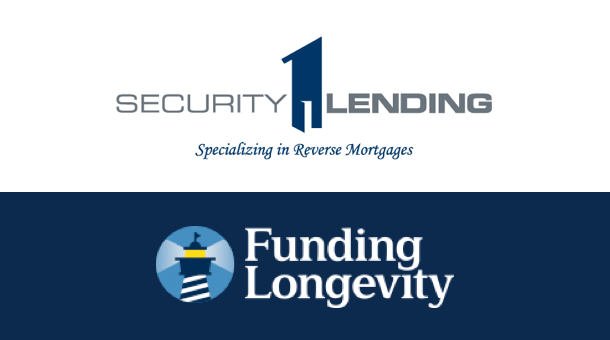The Implications for Financial Professionals Warrant a Second Look
It’s one of the biggest game-changers for financial professionals: the expanded definition of a fiduciary by the Department of Labor under the ERISA act. The rule extends beyond those managing assets to include those giving investment advice for a fee or other compensation.
What does this mean for financial professionals?
- Transactions involving ‘qualified’ retirement plans are covered by the rule (IRAs, 401(k)s, etc)
- Expanded definition of fiduciary goes into effect April 2017
- Increased disclosures of costs & fees when moving money from one company to another
- Insurance-based products will be under increased scrutiny
- Advisers should present all options that are in their client’s best interests
Home Equity Warrants Consideration
 According to the U.S. Census Bureau, the typical married couple entering retirement has $92,000 in non-equity assets and $192,000 in home equity. With that in mind does it really make sense to advise a client to sell securities in a down market to maintain their retirement cash flow without mentioning home equity?
According to the U.S. Census Bureau, the typical married couple entering retirement has $92,000 in non-equity assets and $192,000 in home equity. With that in mind does it really make sense to advise a client to sell securities in a down market to maintain their retirement cash flow without mentioning home equity?
In Jamie Hopkin’s recent article in Investment News Hopkins says “Far too many financial advisers overlook home equity as part of a retirement income plan. With heightened regulatory concerns about doing what is in the best interest of the client, it would be prudent to explore and discuss home equity strategies with clients.”
Consider a client over age 62 with $300,000 in home equity. If the market is down 25% is it truly in the client’s best interest to sell stocks at a loss without at least considering what may be their largest asset? Such oversights could potentially raise red flags in the future.
Reverse Mortgages, Not a Silver Bullet but a Potential Tool
The Home Equity Conversion Mortgage (HECM), better known as the reverse mortgage, is an FHA-insured mortgage for homeowners 62 or older which allows them to access a portion of the equity in their home without requiring monthly mortgage payments.
One strategy touted in several financial publications is the ‘standby reverse mortgage’. This approach allows the homeowner to secure a HECM line of credit. This credit line is unique in that the unused portion grows each year, no payments are required and the credit line cannot be frozen or reduced if housing values were to fall as long as the borrower meets the ongoing obligations of the loan.
Utilizing the ‘standby reverse’ strategy one could access a portion of the HECM line of credit to meet income needs in years when the market is down allowing the portfolio to recover. A great way to overcome sequence of returns risk. Several Monte Carlo simulations have shown this approach to substantially increase the longevity of the portfolio and sustainable withdrawals.
Hopkins wrote in his recent article “Although a fiduciary standard might not explicitly touch on housing wealth, there will be added regulatory muscle to consider all of a client’s available assets in the development of their specific plan.”
Articles on “Standby Reverse Mortgage”
Journal of Financial Planning
Advisor Perspectives
Investment News
The information provided in this article should not be regarded as investment advice or as a recommendation regarding any particular security or course of action. Opinions expressed herein are strictly those of the author.
 Such is the case in a recent post I read on LinkedIn from Florian Steciuch. He wrote “ My definition of heartbreak – meeting with an 82 year old client who was given a 30 year mortgage when she bought her new town home last year. Recently she lost her part-time job, now has Social Security of [sic] $1300 with a mortgage P+I of $700. She already missed her property tax payment. She provided a down payment of 50% – this is a prime example of why the FHA HECM for Purchase was a far superior loan option. She would have had NO mortgage payment. She was not offered this option because her bank did not offer it. 80 year old home owners should not be taking on the risk of 360 months of mortgage payments if they have a substantial down payment.”
Such is the case in a recent post I read on LinkedIn from Florian Steciuch. He wrote “ My definition of heartbreak – meeting with an 82 year old client who was given a 30 year mortgage when she bought her new town home last year. Recently she lost her part-time job, now has Social Security of [sic] $1300 with a mortgage P+I of $700. She already missed her property tax payment. She provided a down payment of 50% – this is a prime example of why the FHA HECM for Purchase was a far superior loan option. She would have had NO mortgage payment. She was not offered this option because her bank did not offer it. 80 year old home owners should not be taking on the risk of 360 months of mortgage payments if they have a substantial down payment.”


 According to the U.S. Census Bureau, the typical married couple entering retirement has $92,000 in non-equity assets and $192,000 in home equity. With that in mind does it really make sense to advise a client to sell securities in a down market to maintain their retirement cash flow without mentioning home equity?
According to the U.S. Census Bureau, the typical married couple entering retirement has $92,000 in non-equity assets and $192,000 in home equity. With that in mind does it really make sense to advise a client to sell securities in a down market to maintain their retirement cash flow without mentioning home equity?